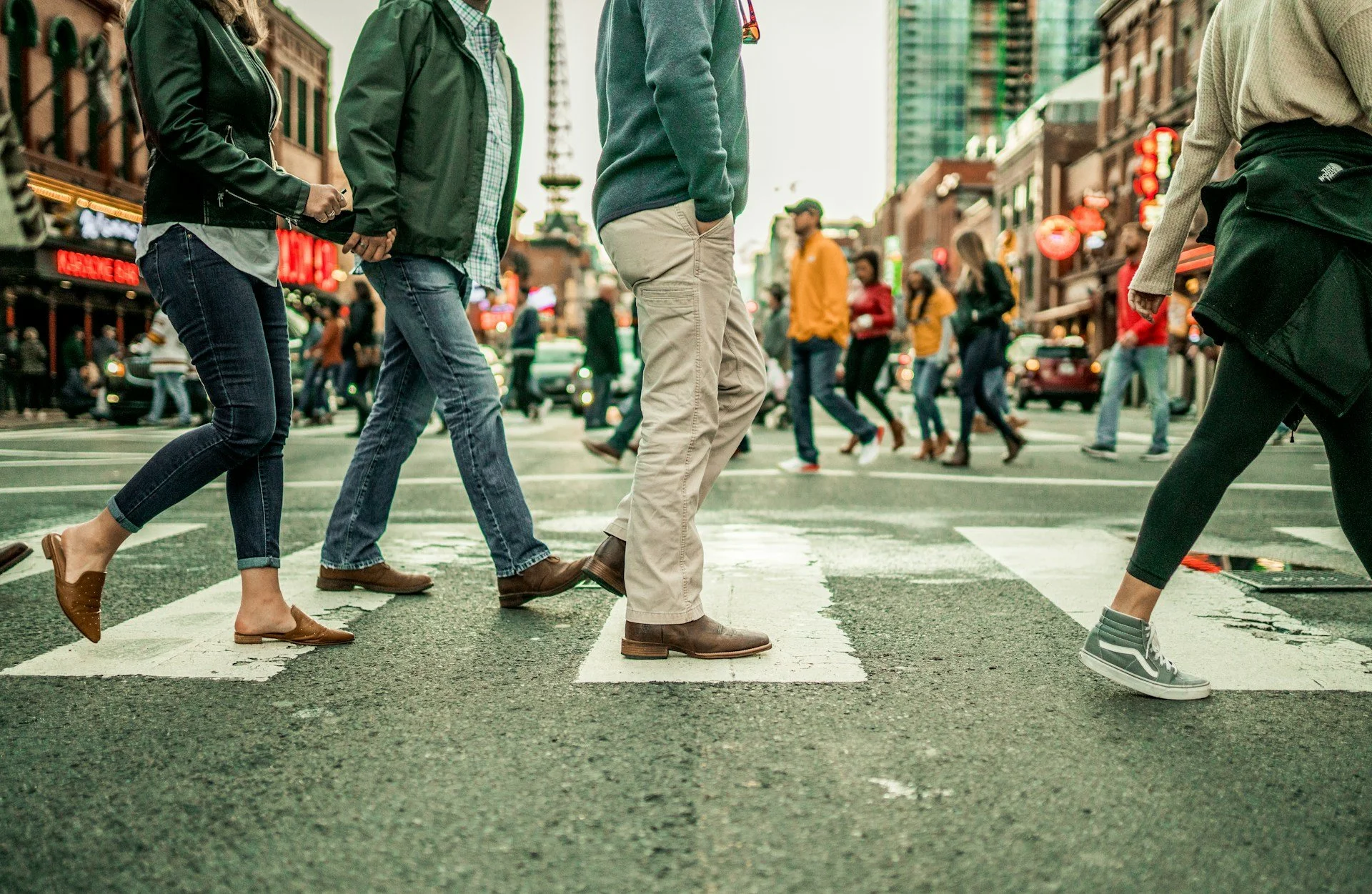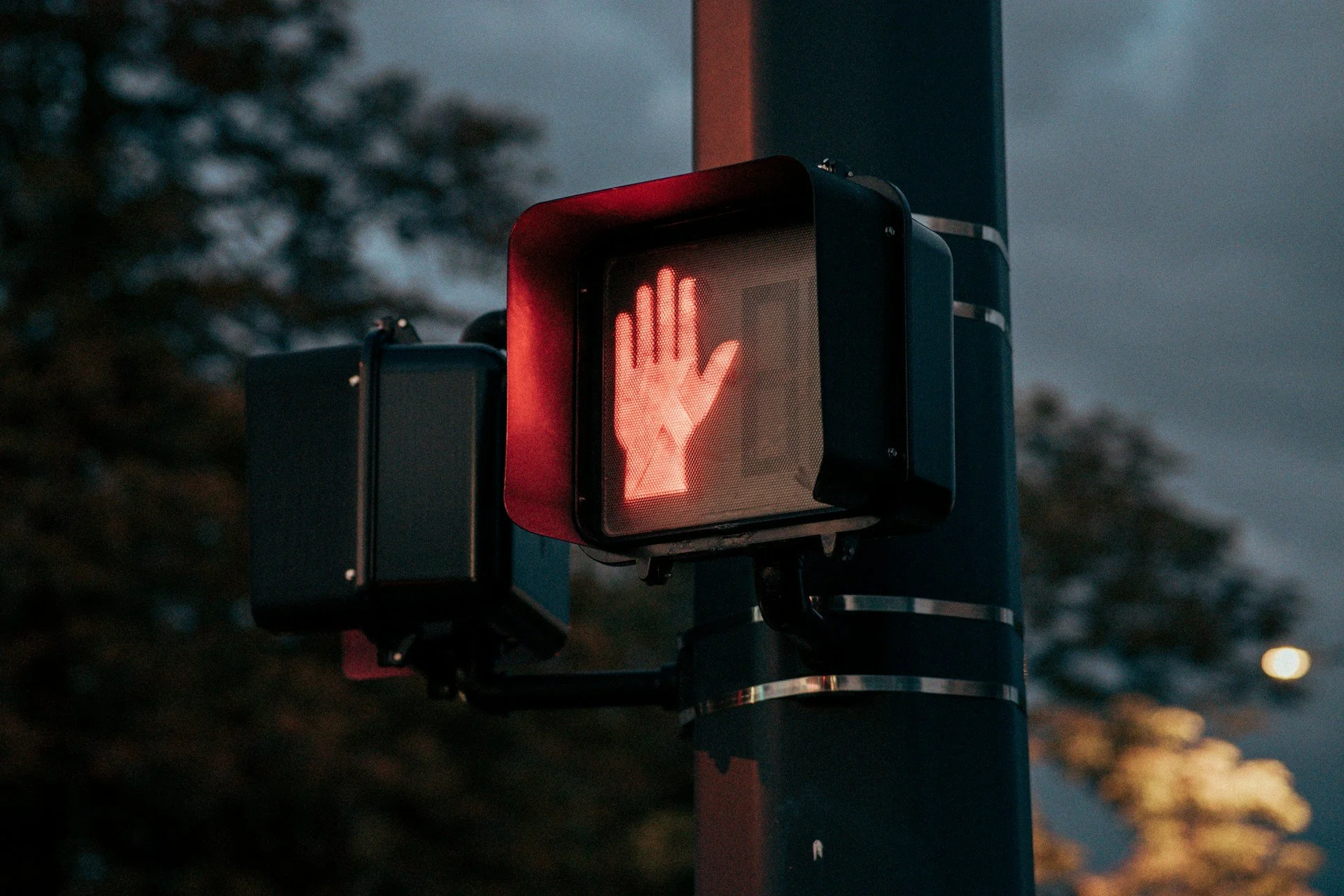
Richmond Pedestrian Accident Attorney
Whether you’re out for your daily run or are walking through your local downtown area, drivers can pose a significant danger to you. Car accidents involving pedestrians have devastating consequences because our bodies are no match to a car traveling at even 10 miles per hour. At higher speeds, pedestrian accidents are often fatal. While pedestrians must be mindful of traffic, where to walk, and how to cross a street, many individuals may have done everything right but become victims of a distracted driver or a speeding car. At Puglielli Injury Law, we don’t let insurance companies bully our clients who’ve been injured through no fault of their own. Gianni Puglielli has significant experience representing pedestrians who have been seriously injured, including a $1.5 million settlement for an individual struck by a pick-up truck.
Why hire a Richmond pedestrian accident lawyer?
If you’ve been struck by a negligent driver, chances are that you’ve been seriously injured. You may find yourself with questions about how to deal with big medical bills, how you’re supposed to work with a debilitating injury, or how insurance works in this situation. At Puglielli Injury Law, we help identify all insurance policies that may apply (including your own car insurance policy, even though you weren’t in a car), negotiate with the insurance companies, and let you focus only on recovering your health, trying to work, and being with your family.
Gianni Puglielli has extensive experience representing pedestrians who’ve been struck by a motor vehicle. As a seasoned pedestrian accident lawyer, litigator, and negotiator, he will guide you every step of the way to a recovery that’s speedy, cost-effective, and maximizes the amount of money that goes in your pocket.
Whether you’re in Richmond or somewhere else, if you’ve been hit and injured by a car, you can give Gianni a call to discuss your potential case. You can also browse some helpful, in-depth FAQs and information below. Please see our general FAQs page too.
VRPC 7.1 Disclaimer: While browsing this website, please bear in mind that it is for informational purposes only; none of the information is intended to constitute, nor does it constitute, legal advice. You should not act or refrain from acting on the basis of any content included on this website without seeking the appropriate legal or other professional advice based on the facts and circumstances of your situation from an attorney licensed in your state. Additionally, this website is available to the public and does not create an attorney-client relationship with those who visit it.
Frequently Asked Questions
Which side of the road should pedestrians walk on in Virginia?
Generally, Virginia law states that pedestrians are supposed to walk on the sidewalk instead of the street, but if there isn’t a sidewalk, the law says that pedestrians should walk on the left side of the road—going against traffic. However, if the shoulders on both sides of the road are sufficiently wide, a pedestrian can walk on either side of the road.
Will car insurance cover me in a pedestrian injury claim?
Just as if you were in a car accident, the negligent driver’s insurance company should provide coverage for your injury claim. And, if you owned a car with insurance yourself, your own insurance policy may apply too—you don’t necessarily need to be in your car for your own coverage to kick in.
Can pedestrians be found at fault for an accident?
Yes. Like with all personal injury cases, including pedestrian accidents and car accidents, Virginia has a rule of “contributory negligence,” which means that if you’re partially at fault, even slightly, for causing the accident or your injuries, then you can’t recover any money. Whether you’re at fault may be a complex question and would benefit from the expertise of a pedestrian accident lawyer. Cars must generally yield the right-of-way to pedestrians, but pedestrians still have duties to guard their own safety. Some examples include:
Using Walk Signals. When you’re at an intersection that’s equipped with traffic lights for cars and “walk” or “don’t walk” signals for pedestrians, wait for the appropriate signal before you cross the road. There may be a viable defense if an accident occurred while the pedestrian crossed when they weren’t supposed to.
Crossing at Crosswalks. Virginia law states that pedestrians should, when possible, cross a road only at an intersection or marked crosswalk. If there isn’t a crosswalk, pay attention to your surroundings and look both ways before crossing the road.
Ensuring You’re Visible. Many pedestrian accidents occur at night and in low-light conditions. You may be walking home after work or running early in the morning before sunrise—in both scenarios, you may not be easily noticed by cars. If you’re walking or running in the dark, be mindful that a driver may not see you from far away, so, if you can, increase your visibility. For example, if you’re marathon training in the morning, wear reflective clothing and a headlamp.
What can I be compensated for in a pedestrian accident injury claim?
When you’ve been injured in a pedestrian accident, you may have incurred what are known as “damages.” Damages are the legal jargon for a loss or harm caused by someone’s negligence. Broadly speaking, there are two big categories of damages: “economic” and “non-economic.”
Economic damages (also known as “special” damages) are the easy ones to understand because these are damages that already have a dollar sign next to them for their value. For example: $10,000 of medical bills or $1,500 of lost wages.
On the other hand, non-economic damages (also known as “general” damages) are harder to imagine. We can consider these the “human” damages that don’t have a dollar sign next to them—we have to assign a value ourselves and it’s what a jury would have the responsibility of doing too. These damages include pain and suffering, loss of enjoyment of life, humiliation, embarrassment, and inconvenience. For example, a painful broken leg can disrupt someone’s life, but that harm isn’t economic in nature. At a trial, a jury would be tasked with figuring how much that’s worth under the circumstances of the case.
There’s also a third category of damages, but it’s rare to obtain. These are called punitive damages. The first two categories described above (economic and non-economic damages) both are characterized as “compensatory” damages. As the name implies, those damages are meant to compensate you for the severity of your injuries and financial losses you’ve sustained. In contrast, punitive damages are less focused on you and, instead, are focused primarily on the conduct of the driver. These are awarded only when the driver has committed egregious conduct, such as driving while under the influence of alcohol, and are meant to punish the driver and deter them (and others) from similar conduct. There are other instances in which punitive damages can be awarded but are determined mostly on a case-by-case basis.
How long do I have to file a pedestrian accident injury claim?
In Virginia, in personal injury cases, generally you have two years from the date of accident or injury to file a lawsuit. If you fail to file a lawsuit within this timeframe, you may permanently lose your right to seek compensation for your injuries. There are some notable exceptions to the rule, such as if the injury claim is being made by a minor or if it’s a wrongful death claim.
What is Puglielli Injury Law’s process for a pedestrian accident claim?
That depends on the particular circumstances of the case, but the process generally looks like this:
Initial Consultation and Meeting. Typically, your first communication with Gianni Puglielli will be a phone call to discuss the merits of your case. During this consultation, Gianni will advise you as to whether he can help you and add value to your potential claim. If he doesn’t think you need the help of an attorney, he’ll be transparent with you and give you some tips and information to help resolve your claim on your own. If you’ve retained Gianni for your case, he likes to schedule a meeting with you, typically in person, but it can be a video call if that works better for you. During this initial meeting, Gianni will gather lots of information from you and discuss the next steps for your particular case.
Establishing Liability and Contact with Insurance Companies. Gianni will open claims with the at-fault driver’s insurance company as well as your own insurance carrier (if applicable) because you may have coverage that can help you (known as “MedPay” and “Uninsured/Underinsured Motorist Coverage”). After this point, all communications with the insurance company will be through him. Then, evidence from the police—such as a police report, bodycam footage, photos, 911 calls—will be obtained and any witnesses will be interviewed.
Treatment and Maximum Medical Improvement. In most cases, the timeline to resolution depends heavily on how long your injuries take to resolve because a case should ideally settle after you’ve recovered to the fullest extent possible (known as reaching “maximum medical improvement” or “MMI”).
Negotiations and Settlement. Once you’ve reached maximum medical improvement and all evidence of your damages has been gathered, Gianni will put together a demand package to send to the insurance carrier, which will kickstart settlement negotiations. Gianni will work with you to reach a satisfactory settlement and then the insurance company will issue payment, and your claim will close.
Litigation. While the majority of cases settle without a lawsuit, it’ll be necessary if a satisfactory settlement can’t be reached. You can find more information on what litigation entails below.



